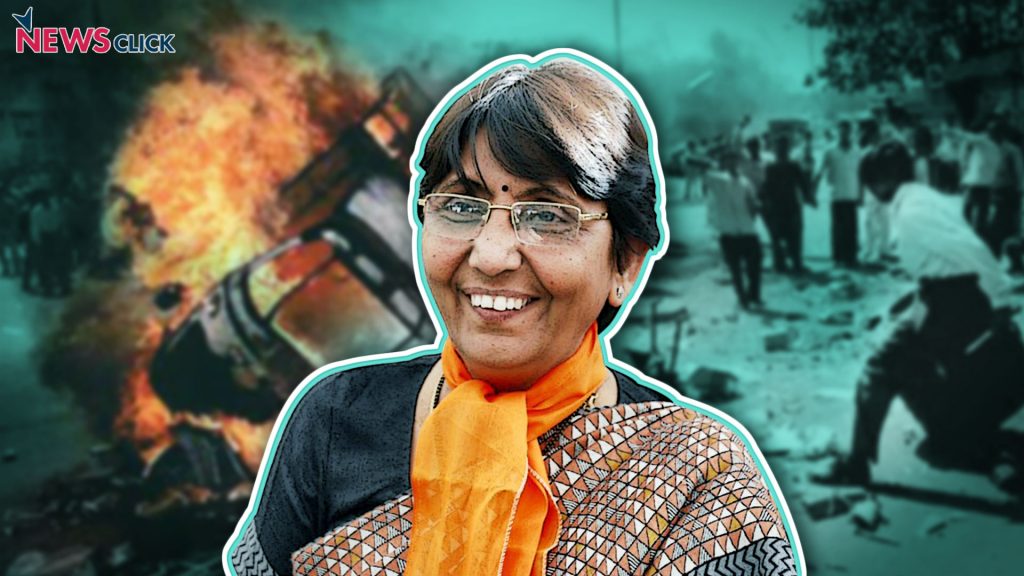
Maya Kodnani Metamorphosis From “Kingpin” of Naroda Patiya Riots to “Doubtful” Role
The Gujarat HC acquitted Maya Kodnani, the former state minister in Gujarat, in the infamous Naroda Patiya riots in Ahmedabad where 97 Muslims were killed in 2002, after the Godhra massacre in February the same year. Many reported the role of the Gujarat Government during the riots and some of the reports have concluded that the riots were state-sponsored. Modi was the chief minister of Gujarat then.
The Supreme Court of India appointed a special investigation team (SIT) to investigate the riots. The Special Trial Court was also set up and in 2012, the STC found that Maya Kodnani was the “kingpin of riots” meaning thereby that she was among the main conspirators of the crime committed in Naroda Patiya and she was awarded 28 years in prison.
How the “kingpin” became “doubtful”? What changed in last 4 years or so that “kingpin” became “not guilty”?
The alibi for Maya was Amit. Last year, Amit Shah deposed that he met Maya in the legislative assembly at 8.30 am and also later in 9.30 am in a hospital comforting the victims of the Godhra train arson.
It should shock any citizen of India as to how the main conspirator declared by the trial court becomes beneficiary of the doubt so suddenly. One has to admit that the judiciary in India is managed by a network of a few families as some studies have brought to fore. If the Judiciary as an important institution has become political and seeks partisan interests, India has no hope, except all the communities, get a fair representation in the judiciary. Take, for example, the four Supreme Court judges went against the Chief Justice of India and his autocratic behavior and the discussion is now entirely stopped.
The way Justice Karnan was put in the jail by the caste-based juridical system of India. And look at the role of denying “Special Investigation Team” for an inquiry into the death of Justice Loya by the Supreme Court itself when one of the judges of its own system was found dead under mysterious situation as claimed by Justice Loya’s sister.
The internal contradictions in the legal system must be discussed in the public forum as now it is time the common citizen understands that judiciary in India is not above the constitution of India.
Author – Mangesh Dahiwale
Image Credit – newsclick.in




“I am Brahmin by caste and the extent of landed property held by me including all the members of my family is nil.” This was contention of an affidavit agitated by learned advocate Dipak Mishra in 1979 for allotment of 2 acres of land from Orissa Government.
This runs counter to the official policy enunciated by the concerned State Government:
“This G.O specifically provides vide paragraph 4 that a landless person is one who and his family members do not hold land more than two acres and who have no profitable means of livelihood other than agriculture… Therefore I am satisfied that the opposite party (Justice Misra) was not a landless person and as such he was not eligible for settlement of govt land for agricultural purpose. On this ground alone, the lease is liable to be cancelled… I am satisfied that the lessee has obtained lease by misrepresentation and fraud.”
This is one of the glaring instances to disqualify him for the office of Chief Justice of India.
As someone told in a private TV channel debate that Justice Mishra relinquished the land in question in 2012.
https://en.wikipedia.org/wiki/Dipak_Misra shows that since 1997 he has been a judge and served several High Courts, elevated to Supreme Court in 2011.
If we doubt the fate of common man for justice from judiciary can it be questioned?